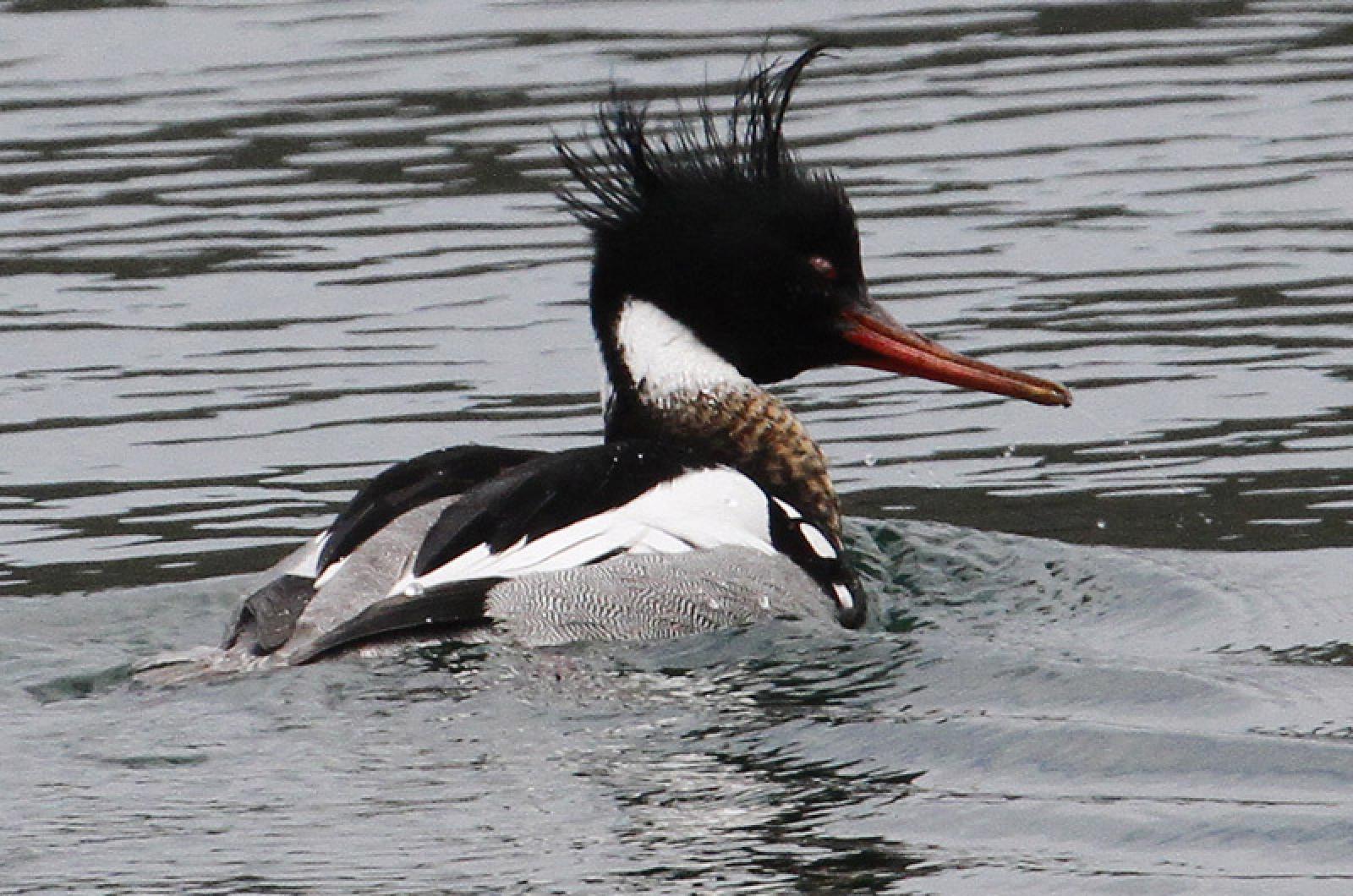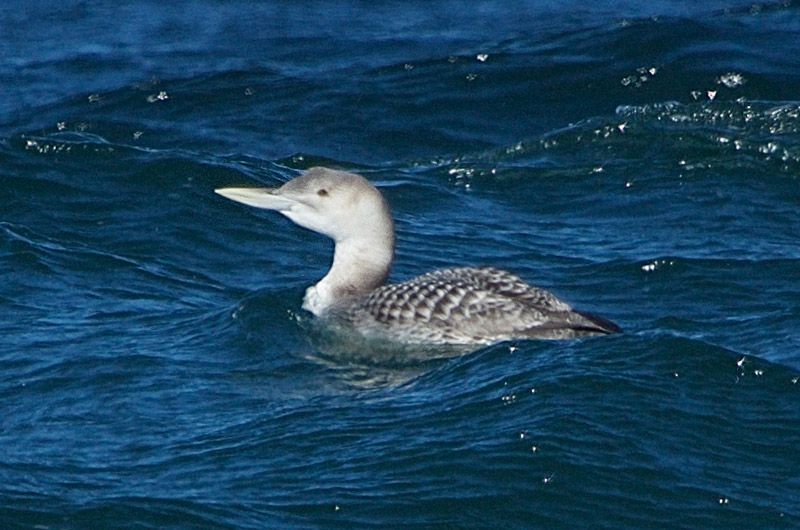What is going on with red-breasted mergansers? These handsome ducks are notable because males always suffer from having a bad hair day thanks to their shaggy crest.
Why are they so scarce this winter? On March 5 there were only 16 red-breasted mergansers on all of Sengekontacket Pond, and that is more than triple the second highest count on the pond. And on Feb. 7, there was only one of them in the entire pond, and it was feeding on the incoming tide by the big bridge.
From the 1970s to 1990s there were frequently hundreds of them on the pond.
Their absence is the same Island wide. The biggest single flock of mergansers on the Island this winter was around 50 birds. And that was in the ocean off Wasque, a place where they always congregate. Only 778 red-breasted mergansers were found across the entire Island on our Jan. 2 Christmas Bird Count — less than half their average abundance in the 1980 and 1990s. There are several reasons for this decline.
John Nelson, charter fishing boat captain and high school biology teacher, notes that the biology of Sengekontacket Pond is out of kilter. Eelgrass and other bottom vegetation, the base of the pond’s food web, is almost gone. With less eelgrass, the critters that depend on the eelgrass are also greatly reduced. Thus, small fish like sand lance and silversides are greatly depleted. And so too are the mergansers which eat these small fish. As Captain Nelson asks: “Would you go to a restaurant that does not have any food for you?”
There are other possible explanations too. Gus Ben David points out that the winter has been generally mild, so many of “our” ducks have stayed further north than usual because Quabbin Reservoir and other more northern lakes did not completely freeze over this winter.
A third reason for fewer mergansers is that much of the pond has become so shallow because of all the sand washing into the pond through the two bridges. On a full moon during low tide you can now, except for the dredged channel, wade between State Beach and Felix Neck without getting your knees wet. That is too shallow for a diving duck like a merganser.
Unfortunately, there is no one cause of the low numbers of red-breasted mergansers in Sengekontacket Pond. All of these reasons contribute to the explanation of the low populations of mergansers and other ducks this winter.
Bird Sightings
The bird of the week is a new addition to the avifauna of Massachusetts. It is not often that we find a species that has never before been seen in Massachusetts — a yellow-billed loon was first seen from Race Point in Provincetown on Feb. 29. Lanny McDowell found it on March 1 and Ken Magnuson found it on March 3. It is interesting that the loon was near two Pacific loons. Both species have similar breeding ranges and both tend to spend their winters on the Pacific Ocean.
March 5 seems to be a day when people were out looking for birds. Margaret Curtin reports a flock of 18 turkey vultures soaring over North Tisbury. Lanny McDowell spotted 10 meadowlarks in the fields at the Farm Institute. Penny Uhlendorf had a fox sparrow visit her feeders, but it did not stay long. I counted 66 brant in Ocean Park.
Tom Chase was visiting Gus Ben David on March 6, when an adult peregrine falcon flew by. Mr. Ben David also reports that he has screech owls calling and sees turkey vultures daily.
On March 6 I birded the fields of the Norton Farm, where my highlights were two field sparrows and eight white-throated sparrows. I headed down the hill to the Head of the Lagoon, which was mostly empty. However, a pied-billed grebe was on the Lagoon Pond side of the causeway, and a short distance further out into the Lagoon was a flock of at least 310 greater scaup. Maybe 10 per cent of them were diving, the others were resting with their heads tucked under their wing so it was easier to count them.
Mr. Magnuson has been watching steady strings of razorbills flying eastward past the right fork parking lot at South Beach on March 8, and for a few days prior to that. Earlier in March there were only one or two birds flying by.
Otherwise it has been a quiet week. There are many reports of feeder birds — titmice, cardinals, chickadees, woodpeckers, juncos — but not much else.
One final note for this week: there will be a celebration of the late Vern Laux on March 17, which would have been his 61st birthday. The show will be on WCAI at 9 a.m., on Mindy Todd’s daily show The Point. For those of us who will be unable to listen because of work, it will also be available on their website, capeandislands.org.
There are lots of birds around, so please get out looking for them, and be sure to report your bird sightings to birds@mvgazette.com.
Robert Culbert leads guided birding tours and is an ecological consultant living in Vineyard Haven.





Comments
Comment policy »